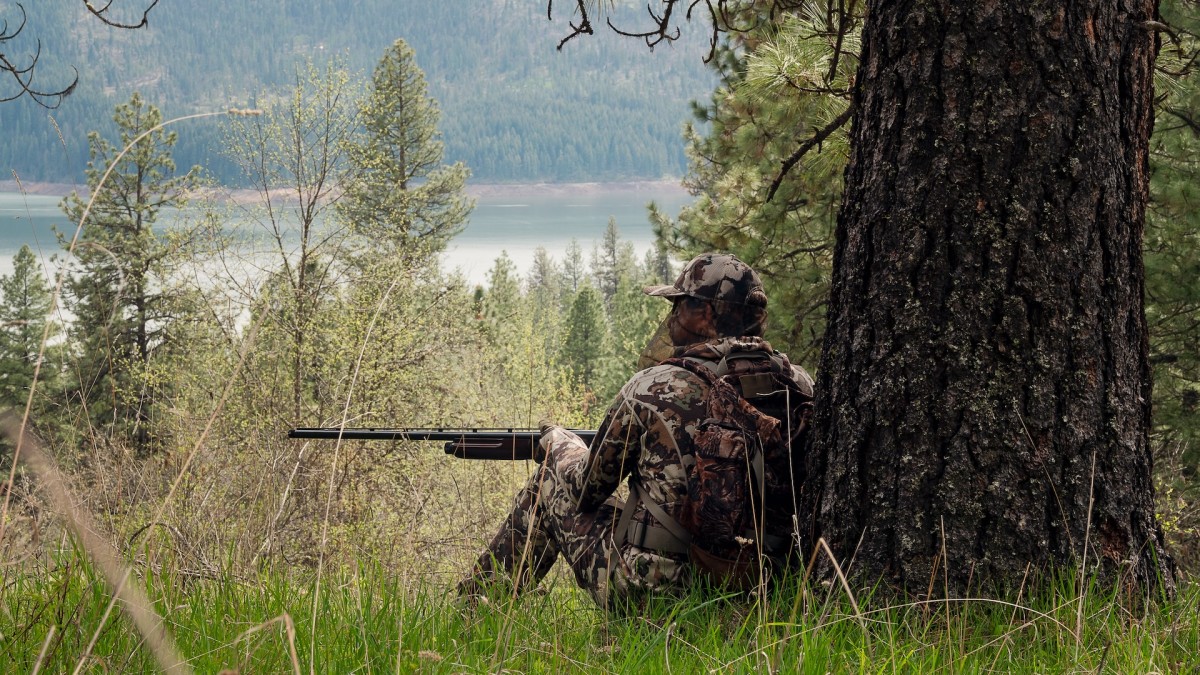
A common factor that turkey killers share is their attention to setups and how they anticipate a turkey will navigate the terrain and vegetation. Head over to YouTube and watch some videos; you’ll notice how folks quickly analyze their position, where the turkey gobbled, and how they need to set up before they ever make a call. That type of analytical thinking will get you one step closer to turkey schnitzel for dinner.
Compared to calling strategies, gear choices, and turkey loads, setups are a grossly overlooked factor in the turkey woods. Instead of blaming a lack of success on henned-up gobblers, stubborn toms, or a host of other factors, it might be time to evaluate your turkey hunting setups. Good calling is necessary, but it won’t do you any good if you’re somewhere a turkey doesn’t want to roam. With that in mind, here are three common mistakes you can avoid to help wrap your tag around a turkey leg.
Wide Open Spaces
One of the best things about hunting turkeys is chasing them in beautiful, old-growth forests. It can also be one of the worst. If you can see hundreds of yards through the timber, so can the turkeys. It can be tempting to set up with your back to a large tree that offers you a clear shot in all directions, but if a wary gobbler can see exactly where you’ve been calling from, he’ll hang up just outside of shotgun range. And if you’re public land turkey hunting, he’ll probably boogey when he doesn’t see a hen.
The perfect turkey setup typically doesn’t offer spectacular shooting lanes in every direction. In fact, the best setups probably offer you small windows or semi-obstructed shooting lanes. If you can, opt for a setup that requires a turkey to come around a patch of vegetation or just over a hill or ridge where he can’t see until he’s in shotgun range. The same goes if you turkey hunt open country. You don’t need to see the entire woods, just where you expect to shoot a turkey.
Hitting the Dirt
I made this mistake early in my hunting career, and it’s a good way to ruin a turkey hunt if you play it too safe. If I went in blind before daylight or struck a gobbler midday, I was so afraid of bumping the turkey that I would immediately set up on the nearest tree, regardless of how far the turkey was, and start calling.
I can count on one hand how many times those scenarios ended with a dead turkey. Obviously, if you strike a gobbler and he’s within a hundred yards, you might not have any other choice. However, if you have some real estate, terrain features, or vegetation between you two, it’s time to close the distance. Unless he’s coming in on a string, you’ve got time to adjust your setup. Turkeys have great vision, hearing, and survival instincts, but they’re not omnipotent.
Terrain and Vegetation Traps
A couple years ago, I was working a turkey that I knew would have to cross a fence for me to kill. When he and another long beard came into view, I watched them walk through that fence like it didn’t exist. However, they quickly encountered a clump of vines that they would not go around. Just like that, I watched them strut out of my life and back through the fence. You’ve probably had a similar encounter with a gobbler that started coming in hot and then hung up just out of sight or shotgun range because he wouldn’t cross a creek, fence, thicket, or you name it. Though not always the case, you stand a better chance of filling your tag if you can eliminate some of those possible barriers.
If you pinpoint a gobbler on a certain side of the creek, try everything in your power to hunt that side. The same thing goes for fences or hedgerows. One time, a buddy and I struck a gobbler late morning. He gobbled his head off just on the other side of a thick privet hedge row. No matter how much we called, he wouldn’t budge, and eventually, he worked off. The very next day, I went in before daylight and set up on the other side of the privet thicket. Not ten minutes after fly down, he went to the great roost tree in the sky.
The best turkey mouth calls, shotguns, or turkey vests can definitely make you a more efficient hunter. However, they won’t fix any shortcomings in your woodsmanship. Treat your setups like another tool in your turkey belt and hone that skill like you would calling. That way, you’ll be in the right position when he comes strutting in.





